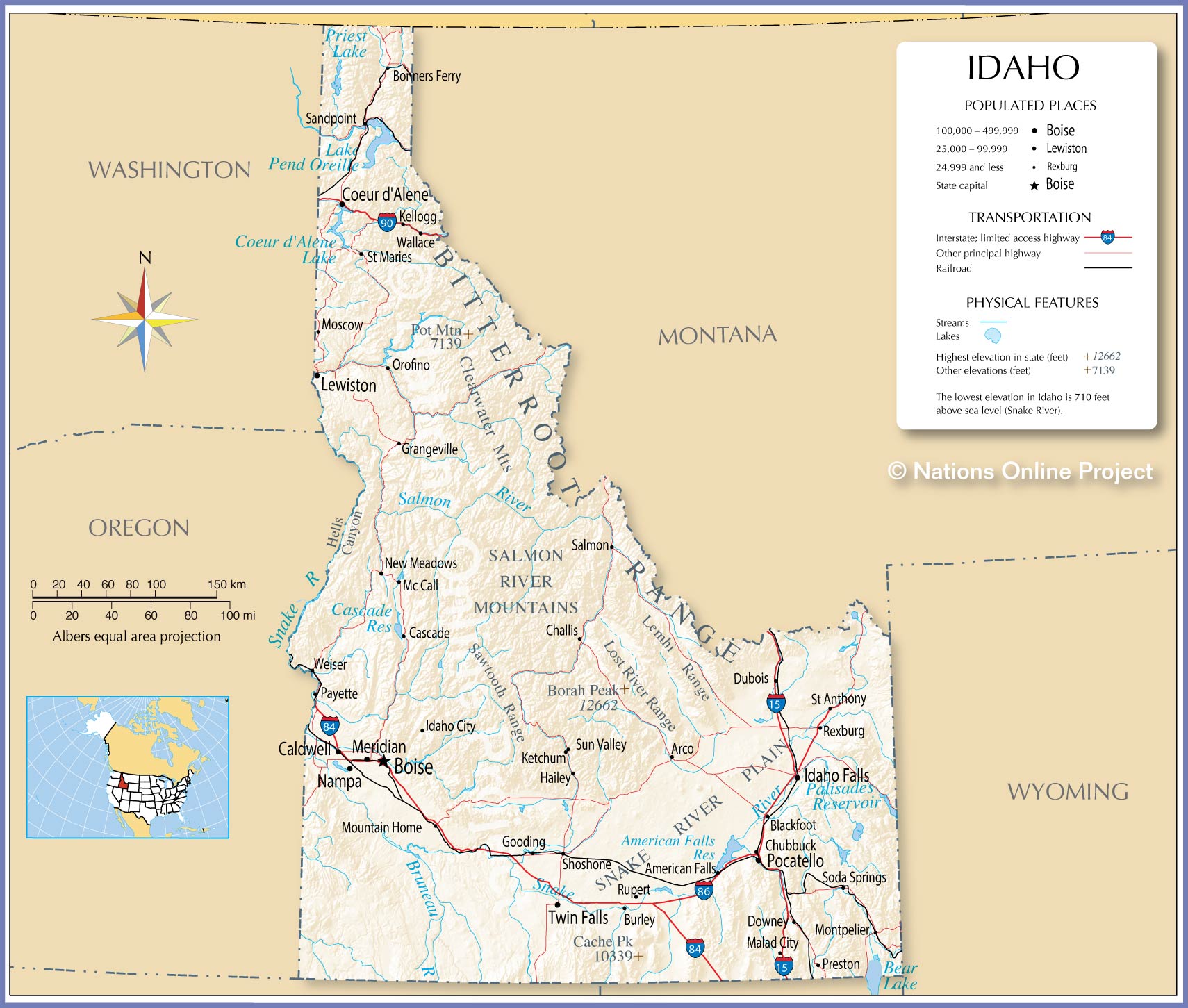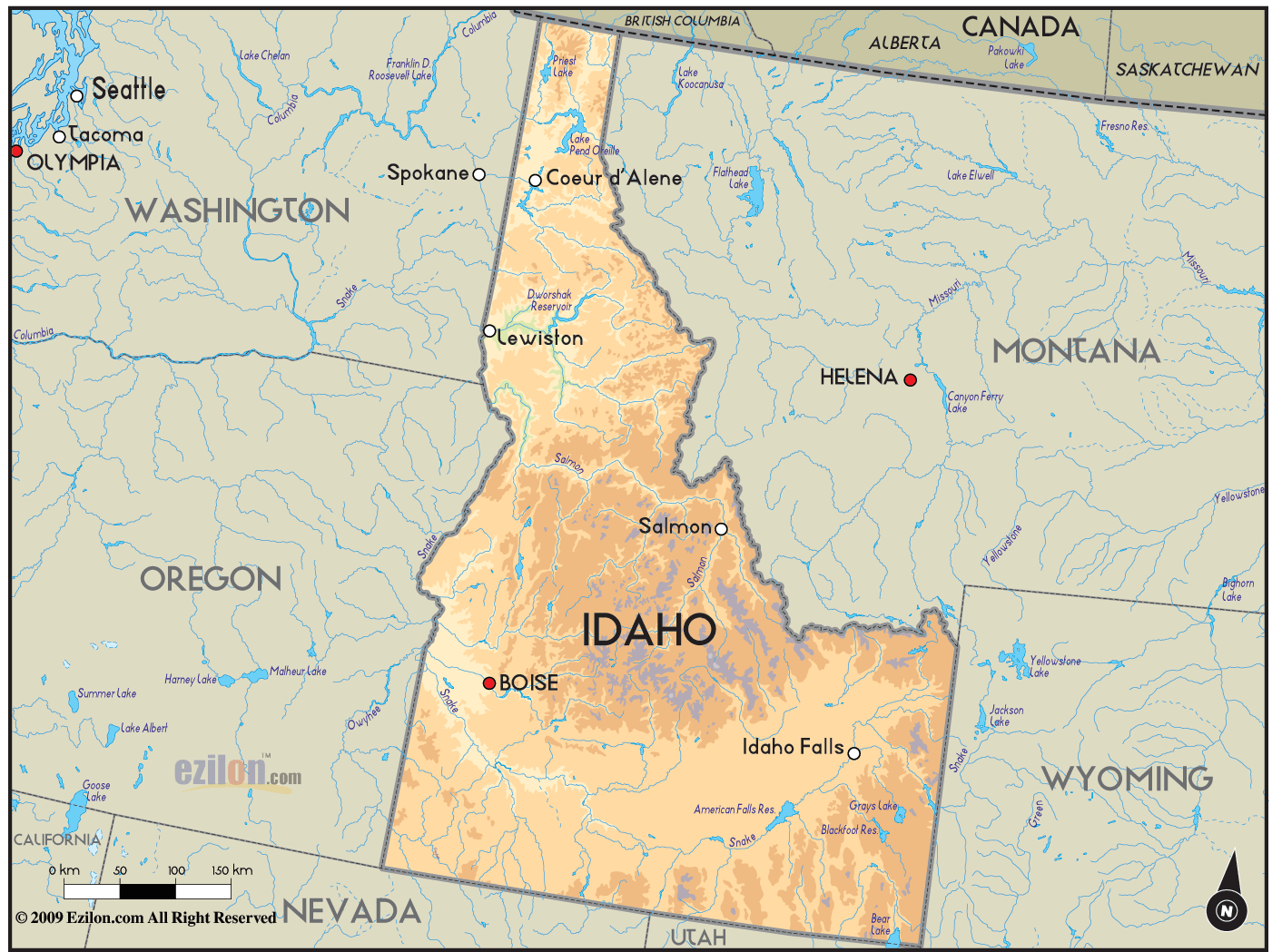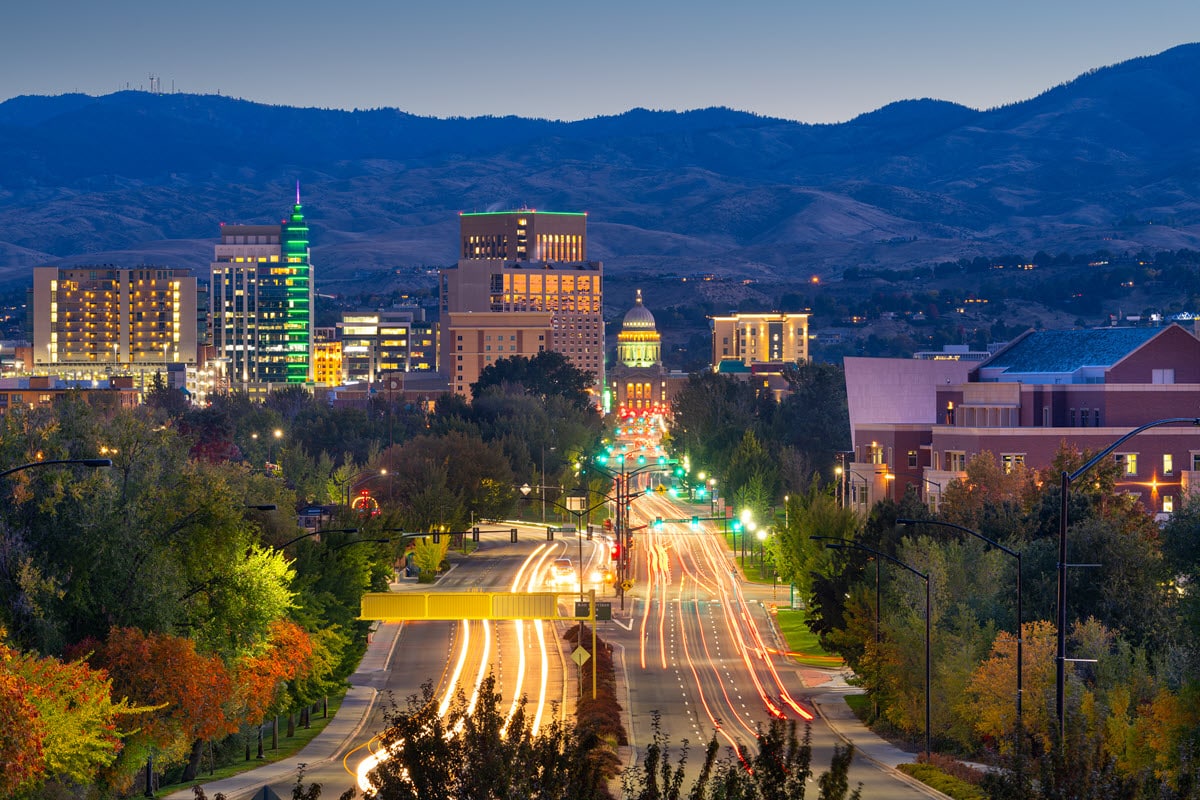
Unveiling Idaho’s Indigenous Tapestry: A Map of History, Identity, and Enduring Spirit
Idaho, a land of dramatic mountains, pristine rivers, and vast high desert, holds a history far older and richer than its statehood. Beneath the layers of westward expansion and modern development lies a profound indigenous narrative, woven into the very fabric of its landscapes. Understanding Idaho’s Native American tribes is not merely an academic exercise; it is an essential journey into the heart of the land, its original stewards, and the vibrant cultures that continue to thrive. This article serves as your guide to the Idaho Native American tribes map, revealing not just geographical locations, but the deep historical roots and living identities of these sovereign nations, perfect for the curious traveler and history enthusiast alike.
The Ancestral Landscape: A Pre-Contact World
Before the arrival of European explorers and settlers, the lands now known as Idaho were a vibrant mosaic of interconnected indigenous communities, each with distinct languages, customs, and economies, yet often sharing trade routes, kinship, and spiritual beliefs. The environment dictated much of their way of life:

- Northern Idaho: Dominated by dense forests, numerous lakes, and salmon-rich rivers, this region was home to tribes like the Coeur d’Alene (Schitsu’umsh), Kootenai (Ktunaxa), and parts of the Nez Perce (Nimíipuu). Their lives revolved around fishing, hunting deer and elk, and gathering berries, camas, and other forest resources.
- Central Idaho: The Clearwater, Salmon, and Snake River systems formed the lifeblood of the Nez Perce, renowned for their sophisticated equestrian culture, vast trading networks, and deep spiritual connection to the land and the salmon.
- Southern Idaho: The vast plains and high desert, traversed by the Snake River, were the traditional territories of the Shoshone-Bannock and Shoshone-Paiute peoples. These groups were expert hunters of buffalo and other game, skilled gatherers of desert plants, and masters of adapting to a challenging, yet abundant, environment.

This pre-contact map was fluid, defined by seasonal movements, hunting grounds, gathering sites, and spiritual places, rather than rigid, surveyed boundaries. It was a landscape understood through generations of intimate knowledge, where every peak, river bend, and spring held a name and a story.
The Major Tribal Nations of Idaho: A Closer Look
Today, five federally recognized tribes maintain a sovereign presence within Idaho, each with a rich history and a dynamic modern identity:

1. The Nez Perce Tribe (Nimíipuu)
- Traditional Territory: Spanning parts of what is now Idaho, Oregon, Washington, and Montana, particularly along the Snake, Salmon, and Clearwater Rivers.
- Modern Location: The Nez Perce Reservation is primarily in north-central Idaho, with its tribal headquarters in Lapwai.
- History & Identity: The Nimíipuu, meaning "The People," were one of the most powerful and influential tribes of the Columbia River Plateau. Renowned for their selective breeding of the Appaloosa horse, they developed a sophisticated equestrian culture that allowed them to hunt buffalo across the plains and establish extensive trade networks. Their intimate knowledge of the land proved invaluable to the Lewis and Clark Expedition in 1805, forming an early, largely positive, contact.
However, the influx of gold miners and settlers led to devastating treaties, particularly the 1863 "Thief Treaty," which dramatically reduced their reservation. This injustice culminated in the tragic Nez Perce War of 1877, where Chief Joseph and other leaders led their people on an epic 1,170-mile flight for freedom, ultimately surrendering just short of the Canadian border. - Modern Presence: The Nez Perce Tribe is a vibrant nation dedicated to cultural preservation, language revitalization, and economic development. They operate enterprises like the Clearwater River Casino & Lodge, manage vast natural resources, and are leaders in salmon recovery efforts, reflecting their ancient spiritual connection to the fish. Their cultural center in Lapwai offers deep insights into their history and traditions.

2. The Shoshone-Bannock Tribes of the Fort Hall Reservation
- Traditional Territory: Historically, the Shoshone and Bannock peoples occupied vast territories stretching across Idaho, Wyoming, Utah, Nevada, and Oregon. The Shoshone were primarily a Great Basin tribe, while the Bannock, a Northern Paiute band, adopted a Plains buffalo hunting culture.
- Modern Location: The Fort Hall Reservation, established by treaty in 1868, is located in southeastern Idaho, encompassing parts of four counties near Pocatello.
- History & Identity: The Shoshone and Bannock, though distinct linguistically (Shoshone is Uto-Aztecan, Bannock is Northern Paiute), formed a close alliance, particularly in their seasonal buffalo hunts across the plains. Their immense territory made them key players in the fur trade era and later, in interactions with westward migrants on the Oregon Trail.
The Fort Hall Treaty aimed to confine them, leading to conflicts like the Bannock War of 1878, sparked by broken promises and settler encroachment on their traditional camas grounds. Despite these challenges, the tribes maintained their cultural integrity. - Modern Presence: The Shoshone-Bannock Tribes are a powerful economic and cultural force in Idaho. They operate the Fort Hall Casino, several businesses, and are significant land and resource managers. They are deeply committed to preserving their distinct languages, ceremonial practices, and the knowledge passed down through generations, actively engaging in cultural education and youth programs.
3. The Coeur d’Alene Tribe (Schitsu’umsh)
- Traditional Territory: Centered around Lake Coeur d’Alene and the Coeur d’Alene River basin in northern Idaho and parts of eastern Washington.
- Modern Location: The Coeur d’Alene Reservation is located in the Idaho Panhandle, south of the city of Coeur d’Alene, with headquarters in Plummer.
- History & Identity: The Schitsu’umsh, meaning "Those Who Are Found Here," were known by French traders as "Coeur d’Alene," or "heart of an awl," referring to their sharp trading acumen. Their lives were intimately connected to the abundant fish, game, and plants of their lake and riverine environment. They were skilled canoe builders and navigators.
Early contact involved Jesuit missionaries, leading to the construction of the Cataldo Mission, Idaho’s oldest standing building. While they embraced aspects of Christianity, they maintained strong traditional beliefs. The discovery of silver and other minerals in their territory led to massive encroachment and the eventual reduction of their lands. - Modern Presence: The Coeur d’Alene Tribe is a leading example of tribal self-governance and economic diversification. Their highly successful Coeur d’Alene Casino Resort Hotel is a major employer and revenue generator, funding essential services, education, and cultural programs for their people. They are deeply involved in environmental stewardship of Lake Coeur d’Alene and surrounding lands, reflecting their ancient commitment to the health of their homelands.
4. The Kootenai Tribe of Idaho (Ktunaxa)
- Traditional Territory: Historically, the Ktunaxa people inhabited areas across parts of what are now Idaho, Montana, and British Columbia, particularly along the Kootenai River.
- Modern Location: The Kootenai Reservation is the smallest in Idaho, located in the very northern tip of the Idaho Panhandle, near Bonners Ferry.
- History & Identity: The Ktunaxa are unique among Idaho tribes, speaking an isolate language (not related to any other known language family) and having a distinct cultural identity that blends Plateau and Plains characteristics. They were expert canoe builders, primarily using birch bark, and were skilled hunters and fishers. Their traditional lands were immense, but they were never given a formal reservation by treaty in the United States.
For decades, the Kootenai faced immense challenges, including the threat of termination as a federally recognized tribe. In a remarkable act of self-determination in 1974, the Kootenai declared war on the United States and demanded their own small reservation, eventually achieving federal recognition and securing their current lands. - Modern Presence: Despite their small size, the Kootenai Tribe is fiercely independent and resilient. They operate the Kootenai River Casino and actively work to preserve their unique language and cultural practices. They are committed to improving the quality of life for their members and maintaining their sovereignty against all odds.
5. The Shoshone-Paiute Tribes of the Duck Valley Reservation
- Traditional Territory: The Western Shoshone and Northern Paiute peoples traditionally occupied vast areas of the Great Basin, including southwestern Idaho, southeastern Oregon, and northern Nevada.
- Modern Location: The Duck Valley Reservation straddles the Idaho-Nevada border, with tribal headquarters in Owyhee, Nevada. A significant portion of the reservation lies within Idaho.
- History & Identity: These two distinct, yet closely related, groups shared a similar high desert existence, relying on meticulous knowledge of seasonal plant cycles and hunting small game, supplemented by occasional buffalo hunts. Their lives were shaped by the resources of the Great Basin.
The Duck Valley Reservation was established in 1877 to consolidate various Shoshone and Paiute bands displaced by mining and settlement. Despite the challenges of forced relocation and the arid environment, the tribes adapted and persevered, maintaining their cultural practices. - Modern Presence: The Shoshone-Paiute Tribes of Duck Valley continue to maintain their traditional lifeways as much as possible, with ranching and agriculture forming a significant part of their economy. They are dedicated to language preservation, cultural education, and community development, working to ensure the strength and continuity of their unique heritage in the high desert landscape.
The Impact of European Arrival and Westward Expansion
The "map" of Idaho’s indigenous peoples underwent a dramatic and often brutal transformation with the arrival of Europeans.
- Early Contact (1805-1840s): Initial encounters, such as with Lewis and Clark, were often characterized by curiosity and mutual aid. The fur trade brought new goods but also introduced diseases, alcohol, and economic dependencies that began to erode traditional lifeways.
- The Gold Rush and Westward Migration (1850s-1870s): The discovery of gold in Idaho brought a massive influx of prospectors and settlers, leading to direct competition for land and resources. This period saw a dramatic escalation of conflicts and the systematic displacement of tribes.
- Treaty Era and Reservation System: The U.S. government sought to "manage" the Native American presence by signing treaties that, in exchange for vast land cessions, promised small reservations and annuities. However, these treaties were often imposed, misunderstood, and frequently broken, leading to profound injustices and the drastic reduction of tribal lands. The reservation system confined peoples who had traditionally moved freely, disrupting economies and social structures.
- Forced Assimilation (Late 19th – Mid-20th Century): Policies aimed at "civilizing" Native Americans included the Dawes Act (allotment of communal lands to individual ownership, further reducing tribal holdings) and the establishment of boarding schools. These schools forcibly removed children from their families, banning native languages and cultural practices, inflicting deep trauma that resonates to this day.
Resilience, Reclaiming, and Modern Sovereignty
Despite centuries of dispossession, violence, and attempts at cultural eradication, Idaho’s Native American tribes have demonstrated extraordinary resilience. The latter half of the 20th century marked a pivotal shift towards self-determination and the reclaiming of sovereignty.
- The Civil Rights Era and Indian Self-Determination (1960s-Present): Inspired by the broader Civil Rights Movement, Native American activists and leaders pushed for greater control over their own affairs. The Indian Self-Determination and Education Assistance Act of 1975 allowed tribes to assume responsibility for federal programs and services, leading to a renaissance of tribal governance.
- Cultural Revitalization: Today, all of Idaho’s tribes are actively engaged in language preservation, teaching their native tongues to younger generations. Traditional ceremonies, arts, and storytelling are being revitalized, strengthening cultural identity and pride.
- Economic Development: Tribal nations are sovereign governments, and they leverage this status to pursue economic development that benefits their communities. Casinos, resorts, agricultural enterprises, and resource management are crucial for funding essential services like healthcare, education, housing, and infrastructure, all while creating jobs and contributing to the state’s economy.
- Land and Resource Management: Tribes are often leaders in environmental stewardship, drawing upon millennia of ecological knowledge. They are actively involved in managing forests, fisheries, and water resources, often advocating for sustainable practices that benefit all.
- Education and Advocacy: Tribal colleges, cultural centers, and educational programs are vital for empowering tribal members and educating the wider public about Native American history and contemporary issues. Tribes also actively engage in political advocacy to protect their treaty rights, land, and cultural heritage.
Understanding the Map Today: A Traveler’s Guide to Respect and Education
When you look at a modern map of Idaho, you see the outlines of counties, cities, and national forests. But superimposed on that map are the less visible, yet immensely significant, boundaries of tribal reservations and the vast, often unceded, ancestral lands.
- Reservations as Sovereign Nations: Remember that reservations are not merely "areas" but the sovereign territories of distinct nations. When you visit a reservation, you are entering another nation, and respect for their laws, customs, and privacy is paramount.
- Cultural Centers and Museums: Many tribes operate museums and cultural centers that offer invaluable insights into their history, art, and contemporary life. These are excellent places to begin your learning journey.
- Supporting Tribal Enterprises: By choosing to stay at tribal hotels, eat at tribal restaurants, or purchase goods from tribal businesses, you directly support the economic self-sufficiency and well-being of these communities.
- Engaging with Respect: Always seek permission before photographing people or participating in ceremonies. Be mindful of cultural protocols. Listen more than you speak.
- Acknowledging the Past, Recognizing the Present: Understanding the map of Idaho’s Native American tribes means acknowledging the profound injustices of the past, but also recognizing the strength, resilience, and ongoing contributions of these vibrant, living cultures today. It’s an invitation to see Idaho not just as a scenic destination, but as a land with a deep, complex, and enduring human story.
Idaho’s indigenous map is a powerful testament to survival, adaptation, and the unwavering connection between people and place. It is a dynamic document, continually being written by the sovereign nations who call this land home, inviting us all to learn, respect, and engage with their rich heritage.


